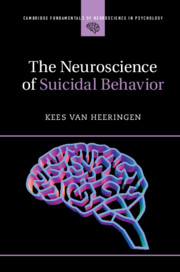Self-inflicted injury (SII) in adolescence is a serious public health concern that portends prospective vulnerability to internalizing and externalizing psychopathology, borderline personality development, suicide attempts, and suicide. To date, however, our understanding of neurobiological vulnerabilities to SII is limited. Behaviorally, affect dysregulation is common among those who self-injure. This suggests ineffective cortical modulation of emotion, as observed among adults with borderline personality disorder. In borderline samples, structural and functional abnormalities are observed in several frontal regions that subserve emotion regulation (e.g., anterior cingulate, insula, dorsolateral prefrontal cortex). However, no volumetric analyses of cortical brain regions have been conducted among self-injuring adolescents. We used voxel-based morphometry to compare cortical gray matter volumes between self-injuring adolescent girls, ages 13–19 years (n = 20), and controls (n = 20). Whole-brain analyses revealed reduced gray matter volumes among self-injurers in the insular cortex bilaterally, and in the right inferior frontal gyrus, an adjacent neural structure also implicated in emotion and self-regulation. Insular and inferior frontal gyrus gray matter volumes correlated inversely with self-reported emotion dysregulation, over-and-above effects of psychopathology. Findings are consistent with an emotion dysregulation construal of SII, and indicate structural abnormalities in some but not all cortical brain regions implicated in borderline personality disorder among adults.
